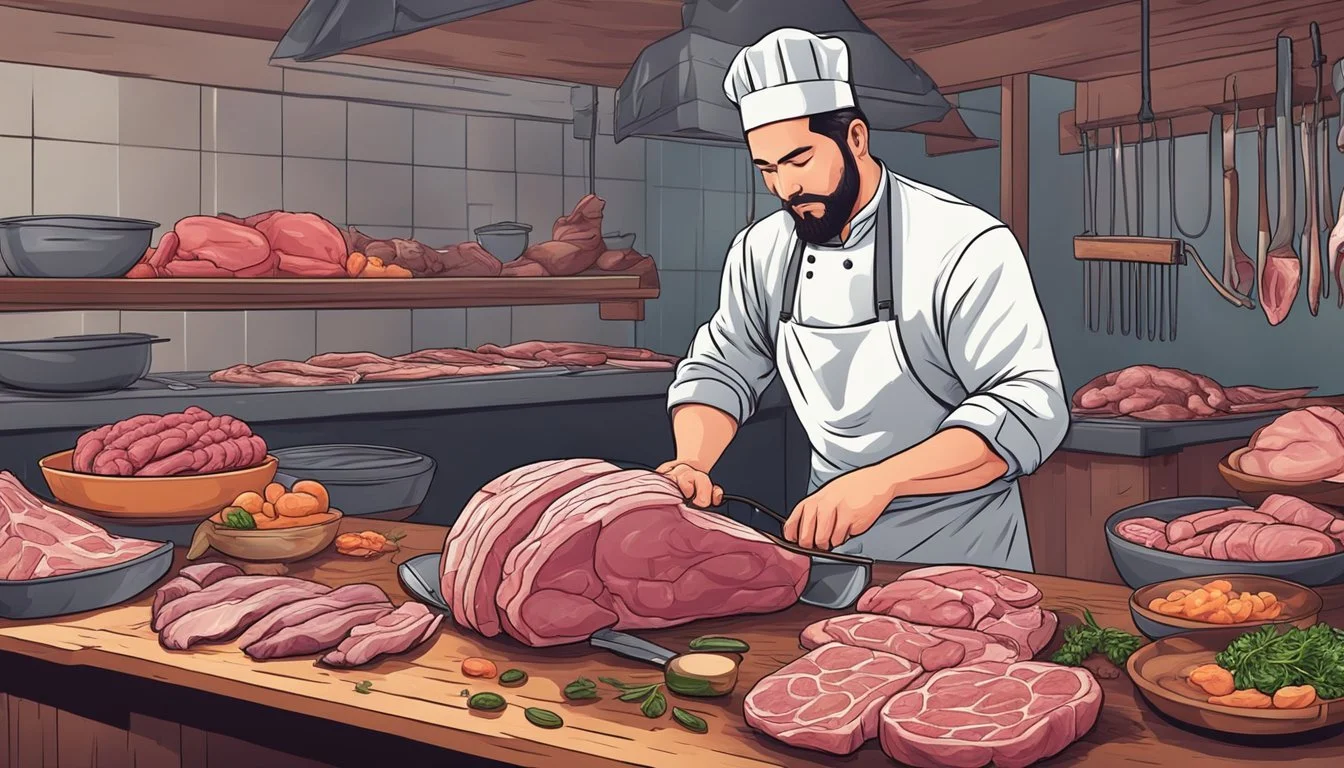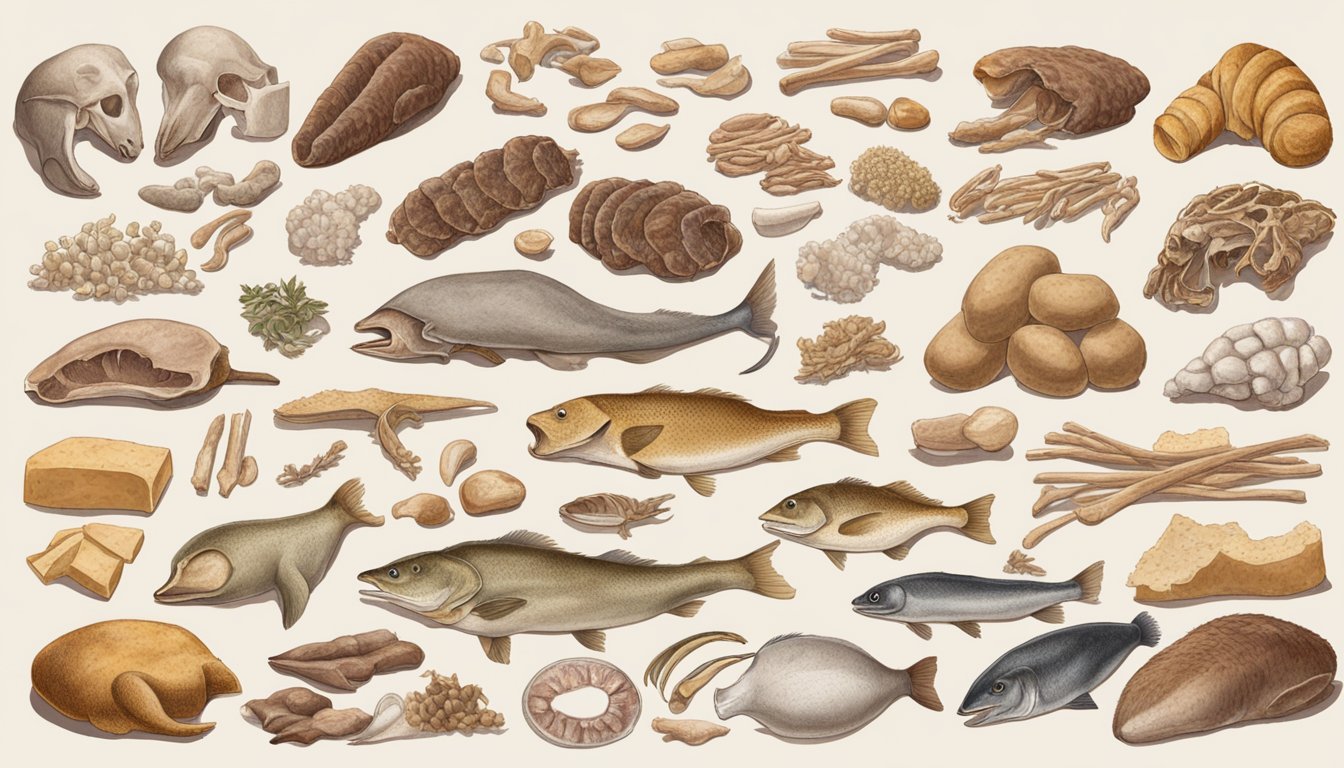The Art of Nose-to-Tail Cooking
Maximizing Flavor and Sustainability
Nose-to-tail cooking is a culinary practice that honors the entire animal by utilizing all parts in food preparation. From organs to bones, skin to tail, this approach ensures minimal waste, offering an array of flavors and textures to the dining experience. Historically rooted in necessity, this method of cooking is experiencing a renaissance as chefs and home cooks alike are rediscovering the benefits of such an inclusive approach to meat consumption.
This philosophy isn't just about thriftiness; it's deeply entwined with respect for the animal and the ecosystem. By using the entirety of the animal, nose-to-tail cooking contributes to a more sustainable food system, one that contrasts sharply with the modern preference for choice cuts. It educates consumers about the value of parts often overlooked and encourages ingenuity in the kitchen with recipes that bring out the best in every element the animal has to offer.
In addition to reducing waste, nose-to-tail eating offers nutritional diversity. Offal — the organs of the animal — is rich in vitamins and minerals such as B vitamins, iron, and choline. Bones and marrow provide essential nutrients as well, including calcium and vitamins A and D. Inviting an exploration of different flavors and textures, the art of using every part of the animal promises a journey through both traditional and innovative gastronomic landscapes.
The Philosophy of Nose-to-Tail Cooking
Nose-to-tail cooking is a culinary approach that involves using the entire animal, promoting sustainability and ethical consumption while also highlighting traditional practices and nutritional benefits.
Historical Context and Traditions
Historically, nose-to-tail cooking was not a trend but a necessity. Communities utilized every part of the animal to maximize resources, minimizing waste long before modern sustainability concepts took root. Traditions such as using animal bones for stocks and tails for creating broths were ingrained in many cultural cuisines as a means of survival and respect for the food provided by the animal.
Sustainability and Ethical Considerations
The modern embrace of nose-to-tail cooking aligns with a sustainable ethos, addressing the ethical implications of food waste. By respecting the animal and reducing the carbon footprint associated with livestock farming, this approach supports a more ethical food system. It encourages whole-animal butchery and challenges chefs and home cooks alike to find innovative uses for parts that would typically be discarded.
Health and Nutrition Benefits
From a nutritional perspective, nose-to-tail cooking offers a range of benefits. Organ meats, or offal, are rich in nutrients like B vitamins, iron, and choline. Other parts of the animal, such as bone marrow, supply vitamins and minerals essential for health. By diversifying the parts of the animal consumed, nose-to-tail cooking can lead to a more balanced intake of nutrients, supporting a holistic approach to nutrition.
Key Ingredients in Nose-to-Tail Cooking
Nose-to-tail cooking embraces the entire animal, ensuring that each part is used thoughtfully and sustainably. This approach respects both the animal and culinary heritage, elevating often overlooked ingredients to create rich and nutritious dishes.
Understanding Offal
Offal refers to the internal organs and entrails of a butchered animal and includes a variety of nutritious and flavorful parts. For example:
Liver: Rich in iron and B vitamins, liver is a central offal ingredient known for its distinct taste and nutritional value.
Heart: Lean and muscular, the heart offers a meaty flavor and is packed with protein.
Kidneys: Another offal component, kidneys are also high in protein and can be prepared in a variety of ways, commonly seared or braised.
Tripe: The stomach lining of animals such as cows, and a staple in many traditional dishes, tripe is known for its chewy texture and is usually slow-cooked.
These ingredients can often be complemented by simple seasonings, like a drizzle of olive oil, to enhance their natural flavors.
The Role of Bones and Cartilage
Bones and cartilage contribute to the depth of flavor and richness in dishes. They're essential for:
Stocks and Broths: Bones are slowly simmered to extract flavor, vitamins, and minerals, creating an aromatic base for soups and sauces.
Collagen: Extracted from cartilage and bones, collagen transforms into gelatin and lends a silky texture to dishes. Chicken feet, for example, are highly valued for their high collagen content.
In addition to flavor, bones and cartilage offer nutrients such as calcium and can be used in concoctions like broths that support overall health.
Utilizing Lesser-Known Cuts
Cooks around the world have perfected the use of lesser-known meat cuts from animals. These cuts often require more skillful preparation but reward with rich flavors and textures:
Pig: Parts like the ears, tail, and trotters are traditionally used in cuisines worldwide, prized for their texture and taste.
Ingredients: Employing a variety of seasonings and preparation methods ensures these unique cuts deliver exceptional dishes.
Meats from these parts tend to be more affordable and sustainable, as they promote the use of the entire animal.
Mastering Techniques and Recipes
Mastering nose-to-tail cooking requires a comprehensive understanding of specialized techniques and a repertoire of recipes well-suited for various cuts of the animal. A cook must know the preparation of organ meats, the foundations of making stocks and broths, and advanced techniques including braising and rendering to fully utilize the animal.
Preparation of Organ Meats
Organ meats, or offal, provide rich flavors and nutritional benefits. To prepare liver, one must soak it in milk for several hours to remove any bitterness before cooking. Kidneys should be trimmed of fat and sinew and can be quickly sautéed. When dealing with heart, chefs typically clean the ventricles thoroughly and marinate it to tenderize the muscle before it is cooked.
Recipes: Pâtés, terrines, and sautéed dishes. (What Wine Pairs Best with Sautéed Dishes)
Techniques: Soaking, trimming, marinating.
Flavor Pairings: Bold spices and acidic components to balance the richness.
Stocks and Broths
Stocks and broths are fundamental in utilizing bones and connective tissues. They require simmering bones for several hours, which extracts collagen, turning it into gelatin and enriching the liquid.
Bone Broth: Simmer bones with a mirepoix of vegetables for 12-24 hours.
Chicken Stock: Chicken carcasses and feet are ideal, simmered for 4-6 hours.
Uses: Foundations for sauces and soups, key for adding depth to recipes.
Advanced Techniques: Braising and Rendering
Braising involves cooking tougher cuts of meat, such as oxtail, slowly in liquid. This process tenderizes the meat and allows it to absorb flavors from the braising liquid, which can later be reduced into a rich sauce.
Braising: Brown meat first, then cook slowly in a flavorful stock or wine.
Rendering: Slowly heat fat trimmings to liquify and separate from impurities; used in confits and to enhance flavor in dishes.
Key Cuts: Oxtail, shank, and other muscular cuts benefit greatly from braising.
Influential Figures and Movements
This section sheds light on pivotal individuals and ideological shifts that have shaped nose-to-tail cooking into a significant culinary ethos, reflecting respect for the whole animal and enthusiasm for sustainable practices.
Fergus Henderson and the Nose-to-Tail Movement
Fergus Henderson is a central figure in the nose-to-tail movement, highly regarded for his influence on how chefs and the public perceive animal consumption. As the author of "The Whole Beast: Nose to Tail Eating," he has been instrumental in advocating for the utilization of each part of the animal. His book, first published in the UK under the title "Nose to Tail Eating: A Kind of British Cooking" in 1999 and later re-released for an American audience, serves as a comprehensive guide on how to cook even the most uncommon cuts of meat.
Prominent Chefs and Advocates
Several chefs and personalities stand out in their promotion and adoption of the nose-to-tail philosophy:
Anthony Bourdain: An ardent supporter and friend to Henderson, Bourdain celebrated the ethical and sustainable aspects of nose-to-tail eating.
The restaurant scene has seen an uptick in chefs dedicated to the movement, not merely as a trend but as a commitment to culinary excellence and resourcefulness.
New York establishments such as The Cannibal have received recognition for their inventive menus that utilize every part of the animal.
These chefs and advocates are not only expanding palates but are also reducing waste and honoring the lives of the animals used in their dishes.
Challenges and Future of Nose-to-Tail Eating
Nose-to-tail eating is both a return to more traditional, sustainable food practices and a culinary advent into unexplored textures and flavors. However, its widespread adoption faces several challenges that affect consumers, chefs, and local farmers. Looking forward, its integration into mainstream dining could influence meat consumption patterns and contribute to a reduction in food waste.
Overcoming Culinary Challenges
Culinary Horizons: Chefs incorporating nose-to-tail practices often need to be innovative to make less commonly used animal parts appealing to the modern diner. This requires a blend of creativity and in-depth knowledge about various cooking methods that can transform unconventional cuts into palatable dishes. To do this, they must educate themselves and their culinary teams about the range of textures and flavors these parts present.
Menu Development: Developing a nose-to-tail menu can be daunting, especially when considering consumer preferences. Many diners are unaccustomed to and may be wary of eating organs or other less familiar animal parts. Chefs face the task of designing dishes that not only respect the animal by using all its parts but also align with their customers' taste expectations.
The Impact on Food Waste and Local Farming
Food Waste Reduction: A core benefit of nose-to-tail eating is its impact on reducing food waste. By utilizing the whole animal, less is discarded, making it a more sustainable practice. For example, bones and offal that are often thrown away can be used to make stocks, pâtés, and other flavorful items.
Supporting Local Farmers: Local farmers stand to gain from the nose-to-tail movement as it can create a demand for whole animal purchase rather than select cuts. This approach can lead to more sustainable farming practices, as farmers can manage their livestock with the entire animal's use in mind. This not only aids in decreasing meat consumption by encouraging smaller, quality-focused farming operations over industrial ones but also fosters a closer chef-farmer relationship.
By confronting these challenges and embracing the opportunities nose-to-tail eating presents, the culinary world can play a pivotal role in advancing sustainable food systems while expanding their offerings to the community.
Curating Nose-to-Tail Menus
Curating a nose-to-tail menu requires a deliberate approach to include a variety of animal parts, ensuring that meals are balanced and flavors are well-matched.
Crafting Balanced Meals
When chefs create a nose-to-tail menu, the focus is on utilizing every edible part of the animal, from chicken feet to pig's trotters. Balanced meals incorporate not only muscle meats but also offal and bones to maximize nutritional value. For instance, a lunch could begin with a salad featuring crispy pig's ear strips, followed by a hearty main dish with savory bone marrow. The inclusion of iron-rich offal adds a layer of robust flavor and increases the meal's nutritional impact.
Pairings and Flavor Combinations
A chef must be adept at identifying flavor combinations that enhance the unique taste of each part. Garlic and salt are essential seasonings that can transform a simple cut of meat into a delicacy. For example:
Chicken feet: Known for their collagen content, they could be stewed with garlic and spices to create a rich, gelatinous addition to soups.
Beast feast: An event or meal that showcases a variety of animal cuts should feature complementary pairings, like a garlicky dressing on a fresh green salad to cut through the richness of fatty meats, such as trotters.
Animal Part Recommended Flavor Pairings Suggested Dish Chicken feet Soy sauce, garlic, ginger Dim Sum-style chicken feet Pig's trotters Vinegar, salt, garlic, root vegetables Braised trotters with root vegetable mash
Through careful planning and an understanding of how each part of the animal enhances the others, chefs can successfully create menus that are respectful to the animal, full of flavor, and nutritionally balanced.






